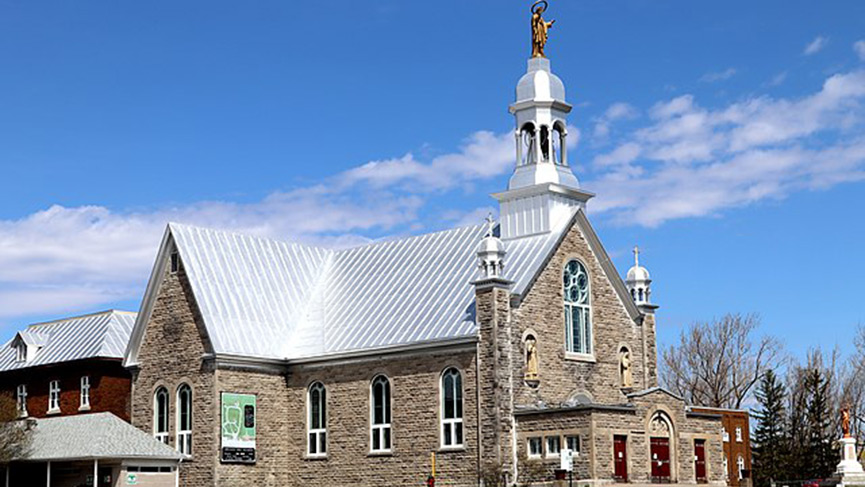Outdoor Mass celebrating the 125th anniversary of the Chapelle de la Réparation

Montreal
The sun shone on the celebrations at the Chapelle de la Réparation as it marked its 125th anniversary on Sunday, August 22. The 100th anniversary of the Capuchins’ presence at the shrine was celebrated at the same time. The "great family of la Réparation" was present in fine form.
Founded in 1896 by Marie de la Rousselière, the Chapelle de la Réparation is situated at the Sanctuaire du Sacré-Coeur et de Saint-Padre-Pio. Nearby are also the outdoor Stations of the Cross.
Marie de la Rousselière: a life of worship
Archbishop Christian Lépine presided at the Thanksgiving Mass and invited the congregation to learn more about the life of the foundress, who at the young age of 25 dedicated herself to the Eucharistic adoration of the Blessed Sacrament. This became the basis of her spirituality and led her to construct the Pointe-aux-Trembles shrine on a piece of land owned by her French-origin family. At that moment in the 19th century, devotion to the Sacred Heart of Jesus was widespread, and it affected Marie deeply. Out of this "encounter," or "synergy," to use the Archbishop’s term, was born her desire to build a shrine dedicated to Reparation, one of the principles of devotion to the Sacred Heart of Jesus and a form of consolation offered in moments of adoration to the Sacred Heart of Jesus "who loves, but to whom we are often ungrateful."
The Capuchins, who arrived on April 18, 1921, have been maintaining the site since that time. In the middle of his welcoming speech, a Capuchin brother introduced a venerable witness to all the life this sanctuary has seen: a 325 year old red oak!
Deep breath
The character of the place and its nearness to nature have been maintained, offering at this slight remove from the city of Montreal an atmosphere deeply conducive to entering into prayer at Pointe-aux-Trembles.
"Shrines exist to allow us to breathe, to breathe the life of God," said Archbishop Lépine during his homily. "Going to a shrine is stepping out of your daily life. We have to make an effort, we have to move in order to come here and breathe in the life of God." Archbishop Lépine reminded us of the importance of having places "dedicated to allowing the soul to breathe" and of giving spaces to the health of the soul, just as we do for the body.
Allowing ourselves to be saved
The theme of Sunday's Gospel provided a beautiful echo of that very Divine Mercy and Reparation for which this chapel is named. "Lord, to whom can we go?" quoted the Archbishop in his homily, "You are Truth and you are Love. When someone comes to us and says, 'I am coming to bring you salvation,' it means first of all that we need to be saved. Now, we may not always want to hear that. And secondly, when he offers us salvation, he offers us paths to salvation that are perhaps not quite the ones we would choose if our salvation were up to us.
The Archbishop further reminded us of the grace of Adoration which brought Marie de la Rousselière’s design to fruition. "We cannot experience adoration without seeing our lives transformed by it," he said.
A friendly Thanksgiving Mass
The Franciscan fraternity was in attendance, as well as the choir of the Pauvres de Saint-François (from Trois-Rivières) who contributed their music to the celebration. The Archbishop also praised the "long tradition of volunteers" going back to 1896, which allows the shrine to carry on in its mission.
"Prayer opens the way to joy and peace," was the phrase heard spoken in Creole during the offertory procession. This part of the ceremony was choreographed by a women’s group from the Haitian community who had been asked to take charge of the Thanksgiving service.
Following the Mass, all those in attendance were invited to join in a picnic lunch and continue the festivities.

Comment
Comment
Add new comment